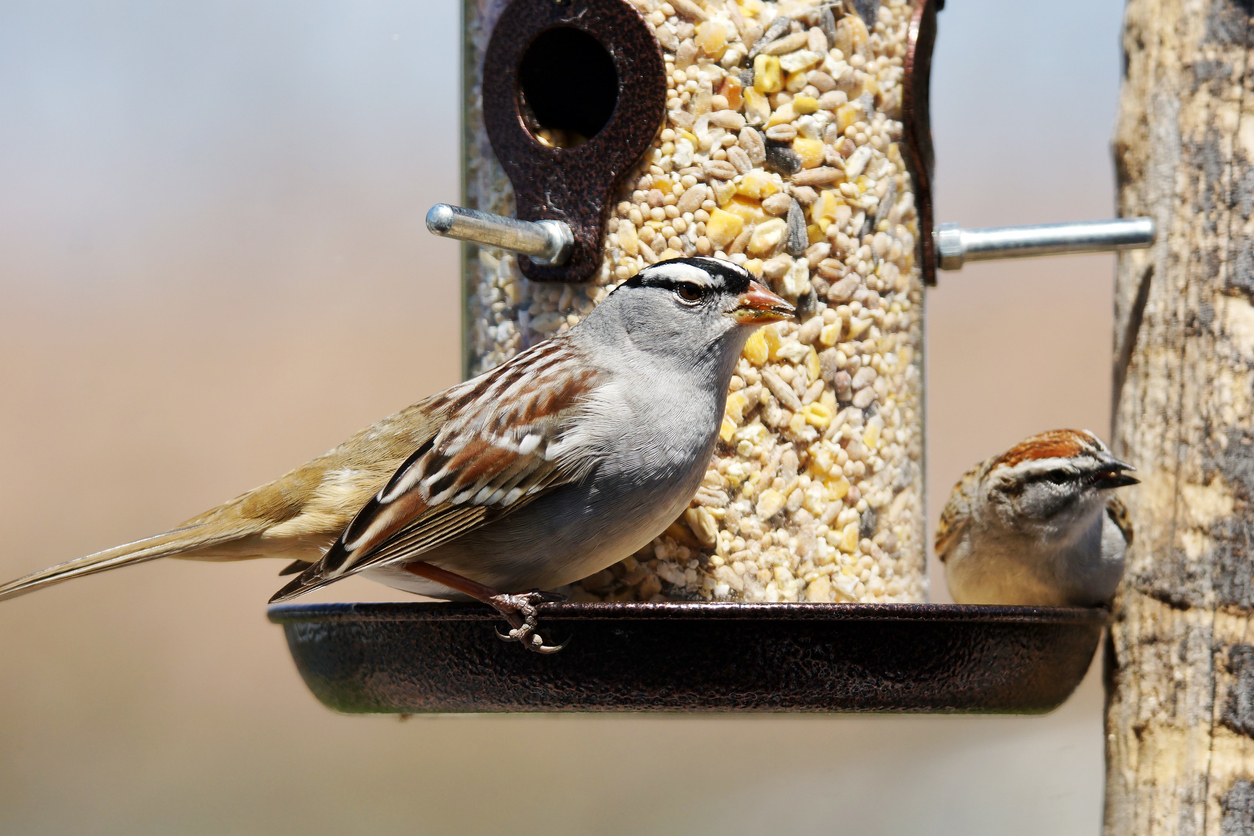
SylvieBouchard / iStock
You know that feeling when you miss a flight because you overslept after a night of getting plastered? Maybe not. Birds, however, may be quite familiar with this particular experience, per a new study on how a common chemical used in agriculture disrupts their migration patterns.
Birds who were fed trace amounts of the world’s most widely-used insecticide, called imidacloprid, became intoxicated, saw their energy reserves depleted, and took several days to recover before they could continue on their migratory journeys, researchers at the University of Saskatchewan found in a recent experiment conducted in Ontario, Canada. The findings were published today in Science magazine.
The findings are noteworthy because they give us a closer look at how the popular insecticide interacts with wildlife in natural—as opposed to lab—settings. Imidacloprid is used by American producers on a wide variety of crops, including corn, canola, rice, fruits, and vegetables. It falls into a class of insecticides called neonicotinoids, named for their chemical resemblance to nicotine. While a lot of research and reporting has been dedicated to the impact imidacloprid has on bees and other beneficial insects, less attention has been given to its effect on birds.
In the spring of 2017, the researchers, led by post-doctoral fellow Margaret Eng, captured over 30 white-crowned sparrows flying north after wintering in the southern United States. The species was chosen for its commonness and because its feeding behaviors are typical of many migratory songbirds in North America.
The researchers divided the captured birds into three groups: One that they fed a high dosage of imidacloprid, another that they fed a low dosage, and a control group that they fed plain sunflower oil.
Both imidacloprid dosage levels were non-lethal and contained insecticide amounts that a bird could plausibly consume in the wild. The higher dose was equivalent to 3.5 canola seeds or one-fifth of a sunflower seed—either quantity makes up just 0.13% of the average sparrow’s daily diet. Using a miniature MRI, researchers took measurements of each bird’s body composition before and after dosing.
Almost immediately, scientists found that swallows exposed to imidacloprid experienced a depletion in their energy reserves, as indicated by a loss of body fat. High-dose birds saw an average body fat loss of 17.1 percent six hours after dosing, compared with low-dose birds at 9.3 percent, and control group birds who saw no change. Likely, the researchers said, this loss of fat was linked to the insecticide’s “anorexic” effect. Just as nicotine can suppress appetite in smokers, exposure to the neonicotinoid in this experiment correlated to an average 70 percent decrease in food consumption for the high-dose bird group. The low-dose bird group saw an 8 percent decrease, which the study found was not statistically significant.
The researchers were careful to note that the capture and handling of the sparrows may have exacerbated imidacloprid’s effects on body weight. They also noted that fat loss wasn’t necessarily a direct and complete effect of reduced appetite—that reduced nutrient absorption due to chemical exposure might play a role, as well.
Eng’s team theorized that energy depletion among the sparrows went hand-in-hand with another observation: When released back into the wild, radio-based location trackers in the birds exposed to imidacloprid took longer periods to recover before continuing their northward journeys. While control group birds had an average stopover time of half a day, low-dose birds took three days of rest and high-dose birds took four before soldiering on. No differences in orientation or speed were observed once they took flight.
“We hypothesize that the extended stopover in imidacloprid-exposed birds was related to the reduced fuel loads and suppression of feeding and fueling ability,” the team wrote in its report. “It is probable that birds in the high-dose imidacloprid-exposed groups, which lost more fat, would need more time to regain fuel stores, resulting in the longer observed stopovers.”
If you know what they say about early birds, you can probably guess what this all means for the ones that get delayed.
“Essentially birds that are late in arriving on breeding grounds tend to have lower reproductive rates or they forgo their breeding attempt altogether,” explains Christy Morrissey, co-author of the study. “Most songbirds only live two or three years. Sometimes they only get one breeding attempt, and so if they miss that window, that can have pretty strong implications for populations.”
The decline of migratory bird populations has been widely documented. To be clear, this study doesn’t demonstrate that insecticide use is the cause of these declines, only that there’s a possible connection that requires more research.
Use of neonicotinoids varies across the world. In the European Union, they’re banned because of their link to colony collapse disorder among bees. Previously, the U.S. Fish and Wildlife Service (FWS) prohibited neonicotinoid use in wildlife refuges, but the Trump administration reversed that policy last year. In April 2019, the Center for Biological Diversity, an environmental nonprofit, filed a lawsuit against FWS over unreleased documents outlining the details of the ban’s impact.
“There’s a lot of pests out there, there’s a lot of people out there to feed, some kind of pest control needs to happen,” Michel says in a phone interview. (Full disclosure: In the past, Morrissey was one of Michel’s post-doc advisors.) Instead, she called for an end to preemptive uses of pesticides, such as treating seeds before they are planted and large-scale spraying of fields.
Her suggestion gestures toward an increasingly popular agricultural approach known as integrated pest management (IPM), which considers pesticide use just one of many measures taken to increase crop yield and health.
“With IPM, we’re trying to reduce risks both from pests and any means used to control them—so traditionally that’s pesticides,” explains Jennifer Grant, the director of New York State Integrated Pest Management at Cornell University. “[IPM] is much more holistically-based. If we want to use fewer herbicides, we might be mulching, we might be using cover crops, we might be cultivating. We’re thinking about resistance in plants. A lot of times, we overlook those preventative steps in the overall management of a crop.”
IPM could lead to significant changes in bird consumption of insecticides. A team of researchers in Minnesota led by Charlotte Roy documented at least 15,000 visible seed spills on farms between Iowa and the Canadian border in a single planting season. In a more recent study, Roy also observed a wide variety of birds and wildlife consuming seeds from spills on hidden cameras. Perhaps most telling, though, is that 78 percent of the birds in Eng’s experiment had low levels of neonicotinoids in their bloodstream when they were initially caught.
IPM may not be as radical as a imidacloprid ban, and it probably won’t eradicate insecticide exposure. But it might help more birds make their flights on time.










